
Lviv is the largest city in western Ukraine, as well as the sixth-largest city in Ukraine, with a population of 717,500. It serves as the administrative centre of Lviv Oblast and Lviv Raion, and is one of the main cultural centres of Ukraine. Lviv also hosts the administration of Lviv urban hromada. It was named after Leo I of Galicia, the eldest son of Daniel, King of Ruthenia.
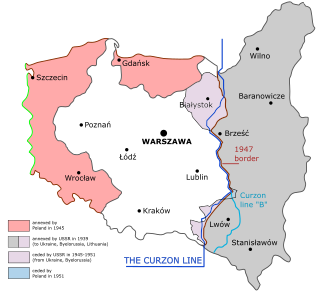
Eastern Borderlands or simply Borderlands was a term coined for the eastern part of the Second Polish Republic during the interwar period (1918–1939). Largely agricultural and extensively multi-ethnic with a Polish minority, it amounted to nearly half of the territory of interwar Poland. Historically situated in the eastern Polish–Lithuanian Commonwealth, following the 18th-century foreign partitions it was divided between the Empires of Russia and Austria-Hungary, and ceded to Poland in 1921 after the Treaty of Riga. As a result of the post-World War II border changes, all of the territory was ceded to the USSR, and none of it is in modern Poland.

Lviv Polytechnic National University is a public university in Lviv, Ukraine, founded in 1816. According to the Times Higher Education, as of 2024, it ranks first as a technical institution of higher education and second among all institutions of higher education after Sumy State University in Ukraine. Lviv Polytechnic is also the largest educational institution in Ukraine by the number of students and one of the largest by the number of faculties and departments.

In July 1941, 25 Polish academics from the city of Lwów along with the 25 of their family members were killed by Nazi German occupation forces. By targeting prominent citizens and intellectuals for elimination, the Nazis hoped to prevent anti-Nazi activity and to weaken the resolve of the Polish resistance movement. According to an eyewitness the executions were carried out by an Einsatzgruppe unit under the command of Karl Eberhard Schöngarth with the participation of Ukrainian translators in German uniforms.

Zygmunt Wojciechowski was a Polish historian and nationalist politician. Born in 1900 in then-Austria, he obtained a doctorate from medieval history at Lviv University. In 1925 he moved to Poznań, where he became a full professor in 1929. In 1934-1939 he became politically involved with the nationalist party Endecja. During occupation of Poland by Nazi Germany he worked in Polish underground opposing German genocide of Poles by providing underground teaching, which was banned by German state and worked on future concept of Polish borders that would provide Poland with safety against any further German aggression. He supported an alliance with Soviet Union and after the war he continued to work as historian in People's Republic of Poland and headed Western Institute that studied former Polish territories recovered from Germany and history of Polish-German relations. He was a recipient of Commander's Cross and Officer's Cross of Order of Polonia Restituta.
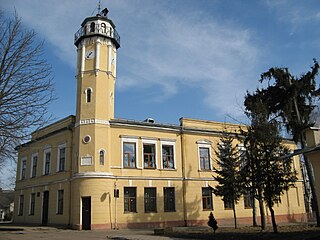
Yavoriv is a city in Lviv Oblast, western Ukraine. It is situated about 15 kilometres (9.3 mi) from the Polish border. It serves as the administrative centre of Yavoriv Raion and is situated approximately 50 kilometres west of the oblast capital, Lviv. Yavoriv hosts the administration of Yavoriv urban hromada, one of the hromadas of Ukraine. Its population is approximately 12,785.
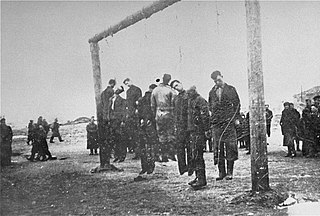
The Lwów Ghetto was a Nazi ghetto in the city of Lwów in the territory of Nazi-administered General Government in German-occupied Poland.

Władysław Filipkowski was a Polish military commander and a professional officer of the Polish Army. During World War II he was the commanding officer of the Armia Krajowa units in the inspectorate of Lwów and the commander of the Lwów Uprising. For his merits he was promoted to the titular rank of generał brygady.
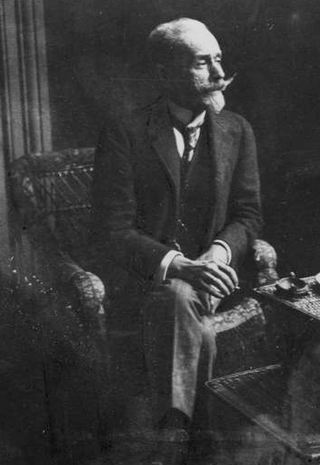
Władysław Łoziński also known as Wojtek ze Smolnicy and Władysław Lubicz (1843–1913) was a Polish writer, historian and art collector, known for his books about the Polish–Lithuanian Commonwealth.

The District of Galicia was a World War II administrative unit of the General Government created by Nazi Germany on 1 August 1941 after the start of Operation Barbarossa, based loosely within the borders of the ancient Principality of Galicia and the more recent Kingdom of Galicia and Lodomeria. Initially, during the invasion of Poland by Germany and the Soviet Union, the territory temporarily fell under Soviet occupation in 1939 as part of Soviet Ukraine.
The Lwów dialect is a subdialect (gwara) of the Polish language characteristic of the inhabitants of the then Polish city of Lviv, now in Ukraine. Based on the substratum of the Lesser Polish dialect, it was heavily influenced by borrowings from other languages spoken in Galicia, notably Ukrainian (Ruthenian), German and Yiddish,

Janowska concentration camp was a German Nazi concentration camp combining elements of labor, transit, and extermination camps. It was established in September 1941 on the outskirts of Lwów in what had become, after the German invasion, the General Government. The camp was named after the nearby street Janowska in Lwów of the interwar Second Polish Republic.

Czerwony Sztandar was a Polish language daily newspaper, published by the Soviet occupation authorities in the city of Lwów, between 5 October 1939 and June 1941, and then again between 1944 and 1950. Its circulation was 40,000 copies daily and the publication contained Soviet propaganda against the Second Polish Republic, clergy and the defeated Polish state authorities. The editor of the newspaper was Jan Brzoza.

Batiar, a popular name for a certain class of inhabitants of city of Lviv. It is considered a part of the city's subculture, Lviv's "knajpa" lifestyle, and became a phenomenon at the beginning of the twentieth century although its roots go back to the mid nineteenth century when Lviv was part of the Austro-Hungarian Empire. It declined after the Soviet occupation of Eastern Poland and its annexation to the Soviet Union as part of the Ukrainian SSR in 1939 and again in 1945. The Soviet authorities expelled most of the Polish inhabitants and suppressed the local Polish culture. However, the use of the term continued, and it is a popular term of endearment in today's Lviv. Since 2008 Lviv celebrates "International Batiar Day", started by the "Dik-Art" company in cooperation with the Lviv City Council. Batiars are seen as embodying the unique culture and spirit of Lviv, and are often celebrated in local folklore and popular culture.
On September 1, 1939, the armed forces of Nazi Germany invaded Poland from the west initiating World War II. Two weeks later, on September 17, Soviet Union joined Germany in their attack on the Second Polish Republic. By early October, Poland was defeated. The occupied Poland was the only country in Europe where the Nazis had introduced a total ban on regional sports clubs. Football was allowed to be practised only by the Germans in the annexed areas of Upper Silesia. Polish activists and players risked their lives by organizing clandestine football competitions in Kraków, Warsaw and Poznań.

Maurycy Allerhand was a Polish lawyer and the Professor of Law at the Lviv University. His authored more than 1,000 works including publications in the field of procedural law as well as civil and commercial ethnography. He was murdered in Belzec during the Holocaust.
The following is a timeline of the history of the city of Lviv, Ukraine.
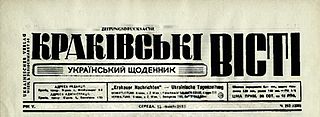
The Krakivs'ki Visti, was a Ukrainian newspaper based in Vienna, published from 1940 to 1945. Historian John-Paul Himka described it as "vehemently antisemitic." Himka described it as a Nazi propaganda daily, published during World War II in the Ukrainian language with the German financial aid, and with exposure orchestrated by Joseph Goebbels himself.

Mieczysław Jan Gębarowicz was a Polish art historian, soldier, dissident, museum director and custodian of cultural heritage. He studied history and the history of art at Lwów University During the 1940s and 1950s he was responsible for saving many Polish cultural works in Lviv, including books and manuscripts, from being destroyed or dispersed.

Walery Łoziński was a Polish writer and publicist.

















